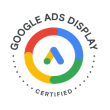Understanding How Google Adwords Works
Google AdWords is an online advertising platform designed to drive traffic to top pay-per-click sites on Google search engine result pages meeting consumer’s search criteria. The platform helps advertisers reach their target audience faster and helps consumers quickly find sites with the information, products and services they want. AdWords uses a unique bidding process to decide which websites will appear at or near the top of the SERP and be more likely to be chosen by people surfing the web looking for information, products or services.

The Process
When people using Google type in the words that define their search criteria, an instantaneous bidding process among pay-per-click clients takes place to decide who will pay more to be at the top of the customer’s SERP. Google’s lightening fast algorithm determines which websites will populate the top of search results page. Winning the bid and being near or at the top of the SERP improves the chances web surfers will click on the site, make a purchase or become a member. For the website owner, the pay-per-click bid is a worthy investment.
Quality SEO Not Enough/
Many website owners find even when they use high-quality SEO their sites still don’t migrate to the top of the SERP of the audience they are trying to reach. Making the small investment in PPC advertising offered on AdWords can often significantly increase the number of visitors and paying customers a websites has on a daily basis. Using this Google advertising platform can mean the difference between success and failure for many e-commerce websites. Google’s algorithm can quickly connect them to their target audience and help increase their sales.
Competitive Keywords
When people enter certain keywords into the Google search engine, there’s fierce competition among websites for top spot on the SERP they see. The more fierce the competition, the higher the pay-per-click bid fee the Google platform charges to place a website atop the SERP. Some keywords can cost as much as $100 per click. Website owners must decide how much it’s worth to increase the chance the web surfer will click on their page and make a purchase. For many website owners, using the PPC bidding process is simply a business expense.
Faster Results
This Google marketing platform offers results that are faster and much better than traditional marketing methods. It can quickly connect businesses to their target audience and drastically increase the number of people their message, offers and website reaches from hundreds to tens of thousands in minutes rather than months. Website owners willingly pay to participate in the pay-per-click auctions because it guarantees them access to a broader audience and new lucrative markets that can help increase their bottom line.
The ‘Ad.’ Label
Top SERP results with an ‘Ad.’ label next to them signifies these sites are participating in Google’s innovative marketing program. Those companies pay to have their websites positioned at the very top of the results list. Plus, they are more likely to have the things for which the web surfer is searching. This mean Google’s innovative marketing platform is helping companies marketing their wares and helping consumers find the things they want and need faster and easier.
Real Time Market Research
Google AdWords also lets businesses use the ads on the platform to perform market research. Companies test different landing pages to see which one works best with their target market and demographic. The Google advertising platform allows companies to use more specificity with their targeted ads and show their ads to people most likely to make purchases from them. Plus, the advertising platform makes measuring the results of marketing campaigns easy. Companies can see the number of clicks a campaign generated, how many of them resulted in sales, how much the company spent and reveals their return on investment.

Quality Score And Ad Rank
The Quality Score a website has is the key to its effectiveness on the Google marketing platform. Websites are given a Quality Score based on the effectiveness of the ad, keywords, ad group and landing page’s ability to connect with what the visitor is trying to find and their likelihood of clicking on the ad. The Ad Rank of an advertiser reflects how well they compete in the keyword search query auction. In Google search engine results pages, the order in which ads are placed is based on their Ad Rank. The top spot goes to the website with the highest Ad Rank.
What Advertisers Pay
Smart advertisers who want the top spot on Google’s SERP pay the lowest amount that’s necessary to top the Ad Rank of competitors below them. This is known as the discounter. Advertisers often take the top spot by bidding $0.01 more than their competition. Although the advertiser may signal a willingness to pay $100 for the top spot, if the highest bid a competitor makes is $12., the advertiser can claim the top Ad Rank by paying $12.01. An advertiser with a Quality Score of 10 controls the auction, pays the least amount possible and forces the advertisers above them to pay the highest price possible to outbid them. This sometimes squeezes advertisers out of the top spot for a keyword.
Creating A Healthy Balance
AdWords was designed to give customers and advertisers a balance of opportunities that benefits them both. The highest bid doesn’t necessarily guarantee top SERP position. Plus, sometimes an inexpensive third place position can yield the best results without draining an advertiser’s budget. The platform still gives the advertiser access to Google’s millions of users worldwide, along with the ability to create and structure ad campaigns specifically designed to expose their target audience to their products and services when they are searching for it.
Many Advantages
This marketing platform provides several advantages for both businesses and consumers. It provides businesses with easy access to countless potential customers. For consumers it offers timely, useful, information and can deliver instant solutions to myriad problems. With a simple query containing a pertinent keyword, the Google search engine quickly assembles and presents eligible advertisers with websites optimized to draw in consumers and provide them with information and solutions related to the keyword they entered. The platform is flexible, versatile and very effective.
User Experience And Ad Quality
The more information businesses have on consumers the better the user experience. Ads can then be tailored to meet their previously expressed needs. This type of customization helps the websites and the Google marketing platform to better serve the consumer. Google uses metrics like Quality Score and Ad Rank to ensure the paid ads are of high quality and relevant to the results the consumers are seeking. Each keyword in an advertisers account is given a quality score on a scale of 1-10. Ad relevancy, expected click-through rate and landing page experience are three factors that impact Quality Score.
Keys To A Successful Google AdWords Campaign
1. Choose words carefully and keep messages short and to the point.
2. Study and compare industry-specific ads impact and clickthroughs before
creating your own.
3. Use terms like ‘Limited Time Offer’ And ‘Buy Now” to create a sense of urgency.
4. Use clear, specific, targeted keywords to attract customers.
5. Regularly run A/B test ads to assess marketing campaigns.
6. Make sure ads, landing pages and customer expectations line up and clicks will
convert into sales.
7. Creating high-quality, relevant ads with good, accessible, information, ad
extensions and ad formats that help customers will improve Ad Rank and enhance ad
performance.







